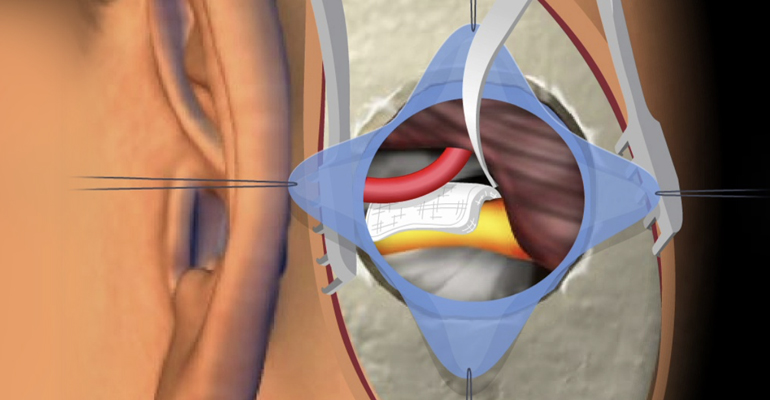

Microvascular decompression (MVD) is a surgical procedure used to treat certain neurological conditions, primarily trigeminal neuralgia, hemifacial spasm, and glossopharyngeal neuralgia. The goal of microvascular decompression is to relieve pressure on a cranial nerve caused by an artery or vein, which can be a source of pain or involuntary movements. Here's an overview of the procedure:
Indications:
Trigeminal Neuralgia: Severe facial pain due to compression of the trigeminal nerve, typically resulting from contact with a blood vessel.
Hemifacial Spasm: Involuntary contractions of facial muscles caused by compression of the facial nerve.
Glossopharyngeal Neuralgia: Sharp, stabbing pain in the throat and tongue due to compression of the glossopharyngeal nerve.
Preoperative Evaluation:
Comprehensive assessment, including medical history, neurological examination, and often imaging studies such as magnetic resonance imaging (MRI) or computed tomography (CT) scans.
Surgical Procedure:
Positioning: The patient is placed in a lateral or semi-sitting position, depending on the specific condition being treated.
Craniotomy: A small opening is made in the skull to expose the affected cranial nerve and the surrounding structures.
Microvascular Decompression: The surgeon carefully identifies the blood vessel causing compression and places a soft pad or Teflon felt between the vessel and the nerve to alleviate pressure. This separation aims to prevent the nerve irritation that leads to pain or muscle spasms.
Intraoperative Monitoring:
Continuous monitoring of nerve function is often performed during surgery to ensure the safety of the procedure.
Closure:
The bone flap is replaced, and the incision is closed using surgical staples or sutures.
Postoperative Care:
Patients are typically observed in the hospital for a few days after the surgery.
Pain management and monitoring for potential complications are important aspects of postoperative care.
Recovery:
Full recovery and resolution of symptoms may take several weeks.
Some patients experience immediate relief, while others may see a gradual improvement over time.
Complications:
While microvascular decompression is generally considered safe, potential complications include infection, bleeding, cerebrospinal fluid leakage, and nerve injury.
Follow-up:
Regular follow-up appointments are scheduled to monitor the patient's progress and address any concerns.
Microvascular decompression is considered a highly effective treatment for trigeminal neuralgia, hemifacial spasm, and glossopharyngeal neuralgia, providing long-lasting relief for many individuals. However, the decision to undergo this surgery is based on a thorough evaluation of the patient's specific condition, symptoms, and overall health. The procedure requires the expertise of a neurosurgeon skilled in microsurgical techniques.